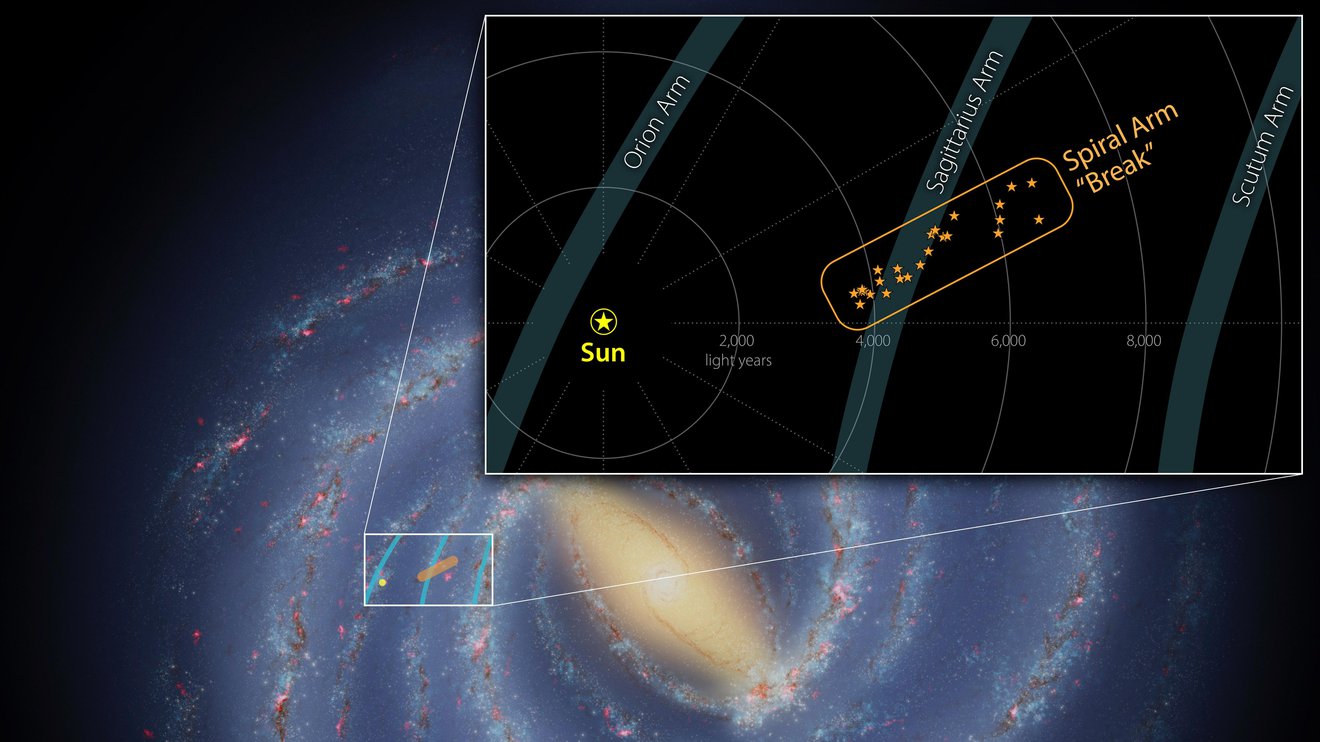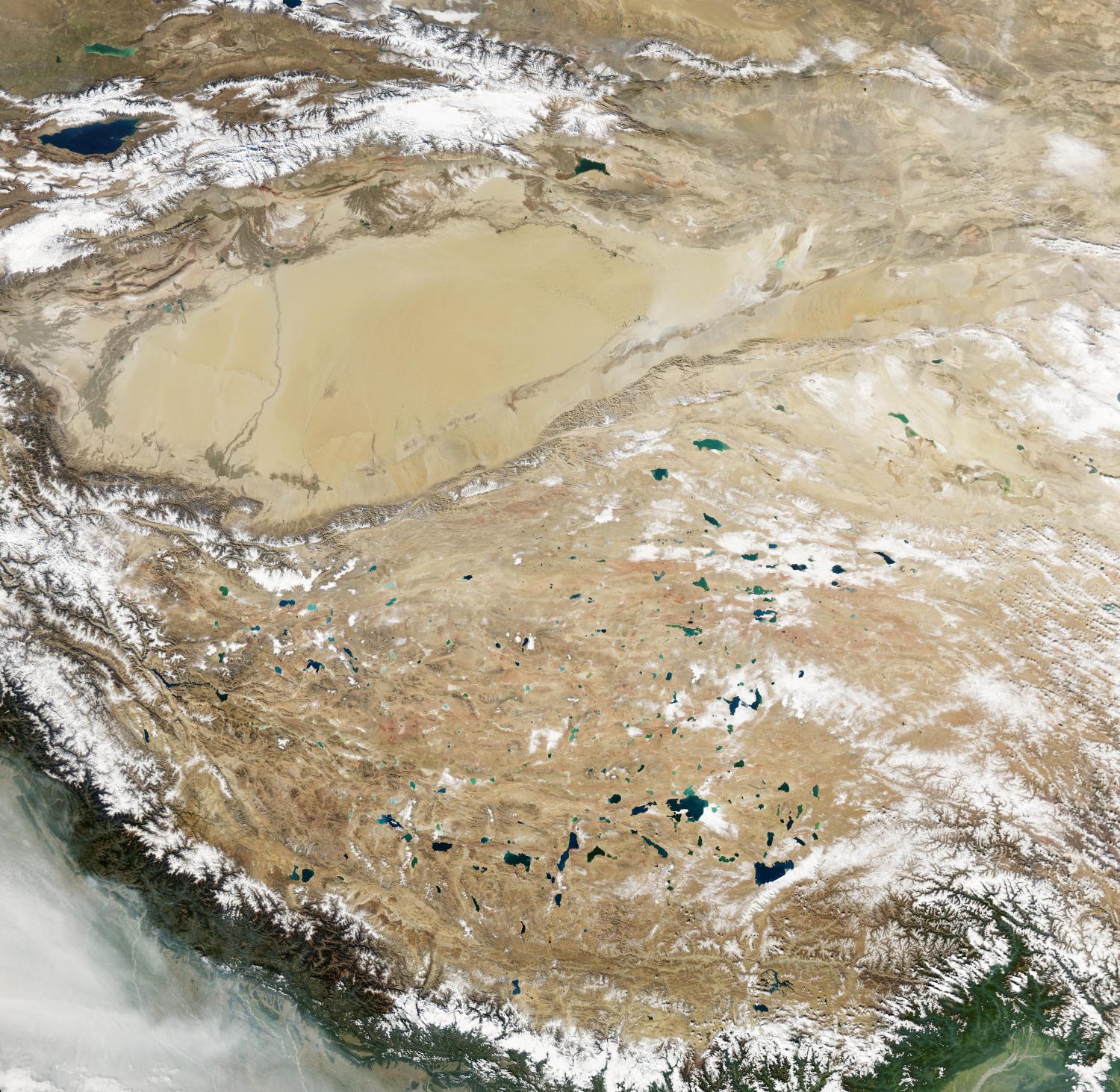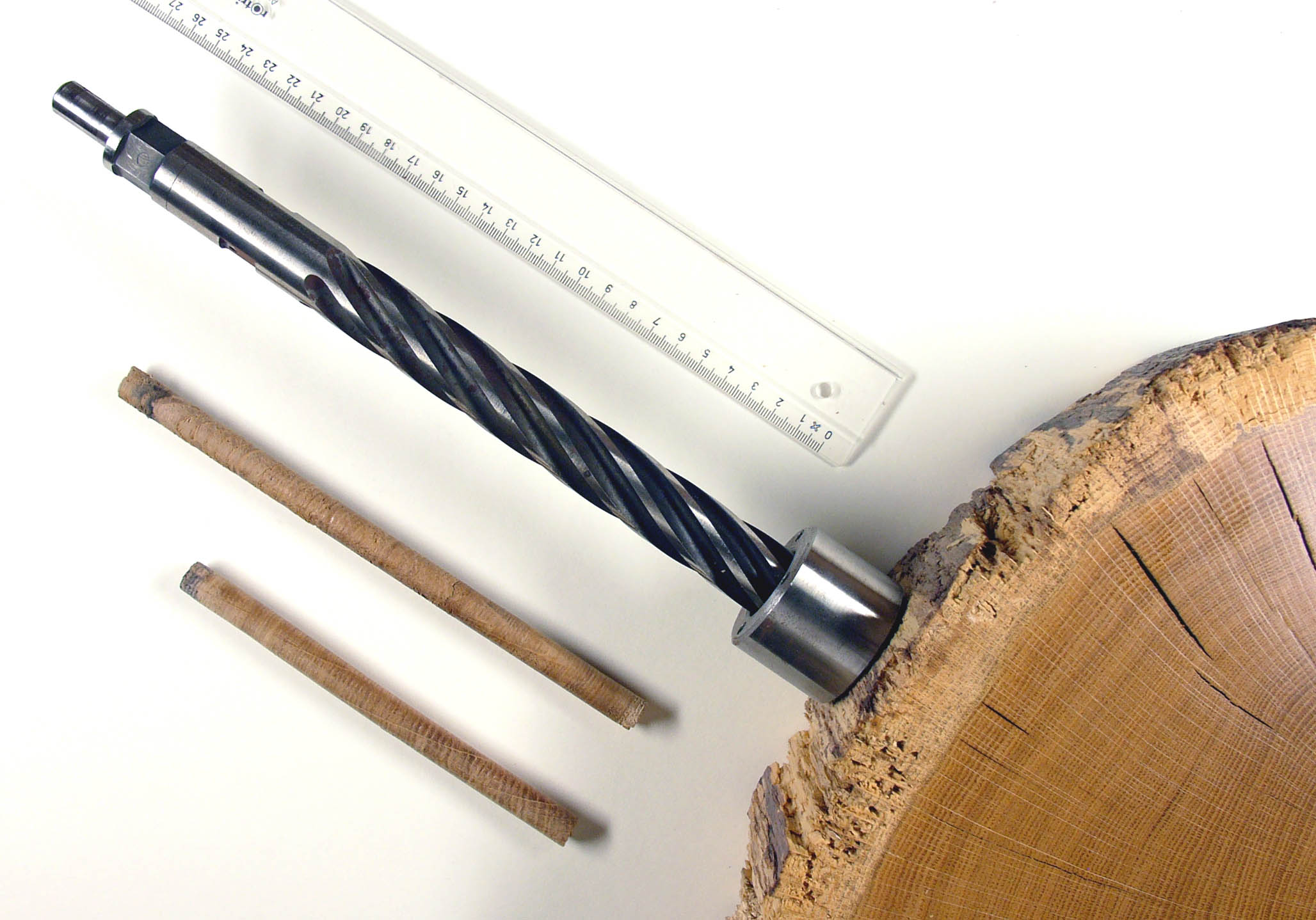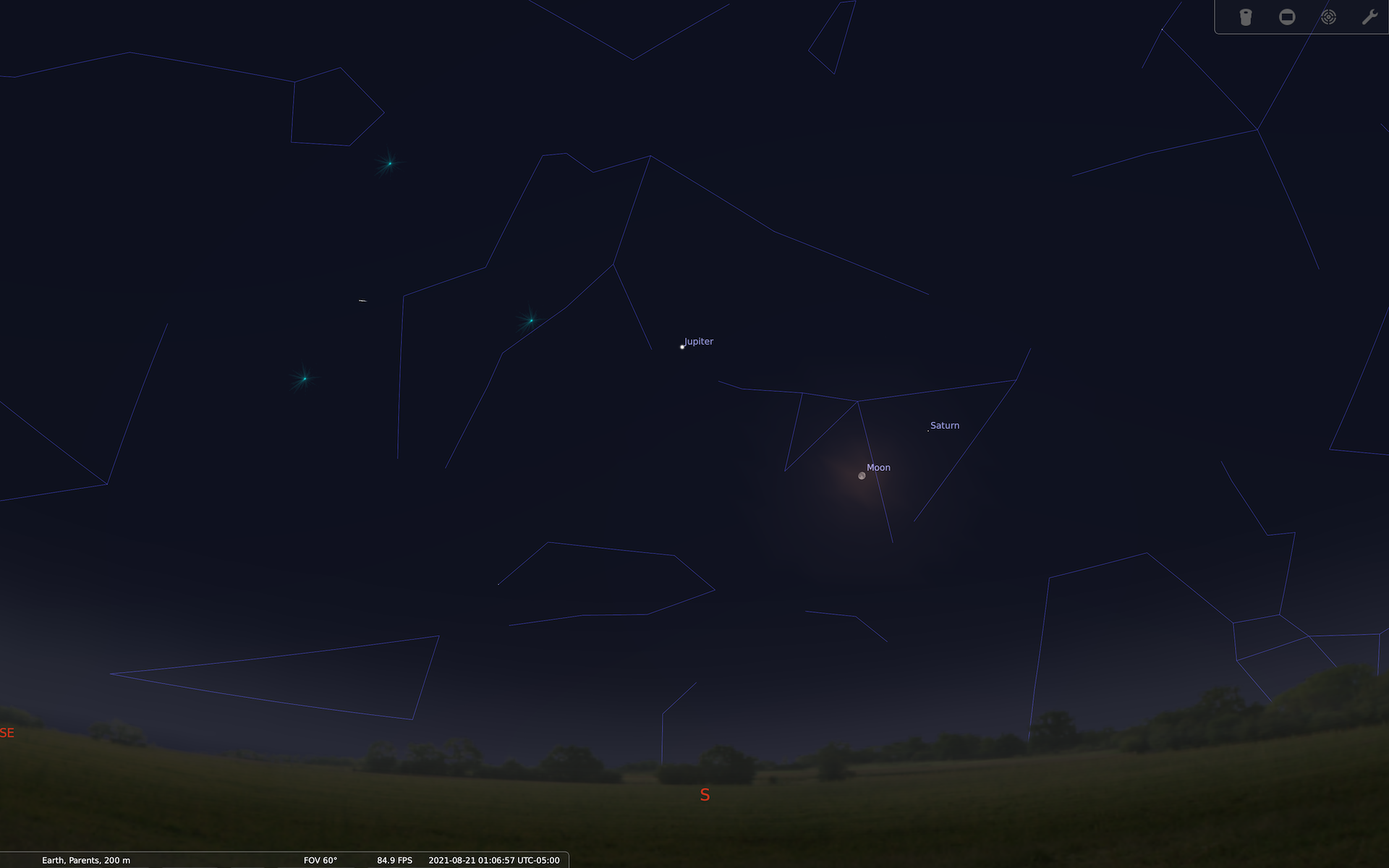We’re talking about particle physics today! An effect called the “triangle singularity” has been observed, and it describes how particles change identities by exchanging quarks. Plus, climate change news, and in this week’s What’s Up, Jupiter is at opposition.
Podcast
Transcript
Hello and welcome to the Daily Space. I am your host Dr. Pamela Gay, and I am here to put science in your brain.
The world is broken. This is a phrase many of us say on a pretty regular basis. It is sometimes in reference to the environment. It is sometimes related to geopolitical stuff. And sometimes it’s just related to a favorite show being canceled on Netflix.
Sense8, you will always be missed.
Today’s news reminds us that our world isn’t the only thing broken in our solar system. Astronomers have determined that the structure of the Milky Way’s Sagittarius arm is broken, with a set of stars sticking out in a disjointed way for unknown reasons.
Yes, folks, our galaxy is broken.

This is actually pretty common. As we look out across the universe, we see a lot of spiral galaxies that have discontinuous structures or weird compound fractures like what is being seen in our own galaxy.
This particular structure is home to several star-forming nebulae, including the Eagle Nebula, Omega Nebula, Trifid Nebula, and Lagoon Nebula. This richness of star clusters and their surrounding stars became a target for the Gaia and Spitzer space telescopes, and according to project lead Michael Kuhn: When we put the Gaia and Spitzer data together and finally see this detailed, three-dimensional map, we can see that there’s quite a bit of complexity in this region that just hasn’t been apparent before.
Co-author Robert Benjamin further explains: Ultimately, this is a reminder that there are many uncertainties about the large-scale structure of the Milky Way, and we need to look at the details if we want to understand that bigger picture. This structure is a small piece of the Milky Way, but it could tell us something significant about the Galaxy as a whole.
This work appears in Astronomy & Astrophysics, and now you know that when someone complains the world is broken, it’s actually the entire galaxy that has problems.
Human beings, hanging out on the surface of Earth, generally don’t have to worry about the goings-on of our Sun. Sure, if it stopped shining, we’d be in for a world of hurt. Heck, in the dark ages, the Sun went quiet for about thirty years, and Europe suffered a mini ice age during what we call the Maunder Minimum. But in general, we’re fine.

While humans on Earth are generally unaffected by the Sun’s variations, our technology, including our power grid, are pretty sensitive to the fits and flares that sometimes come our way, and astronauts off of the Earth really need to worry. Now that our entire economy is reliant on the satellites above the Earth and the power grid on the Earth, we need to be able to forecast when the Sun is most likely going to misbehave so we can put tech and astronauts into safe modes and places.
Humans have known for a long time that the Sun has a 22-year cycle during which its magnetic field flips back and forth in polarity. For roughly eleven years, the Sun’s magnetic field will match the Earth’s alignment, and then for roughly eleven years, it will be oriented the opposite way. It is during the transition between these two states that things tend to get stormy on the Sun, and understanding how things transition is important to making space weather predictions.
In new research appearing in The Astrophysical Journal and led by Sandra Chapman, researchers find the stormy period actually differs based on if the Sun is going from the north is up to north is down. For unknown reasons, the flip to north-is-down takes longer. According to Chapman: I also think it is remarkable that something the size of the sun can flip its magnetic field every 11 years, and going down-up is different to going up-down. Somehow the sun ‘knows which way up it is’, and this is an intriguing problem, at the heart of how the sun generates its magnetic field.
Our ability to do research is a function of how good our instruments are and how good our problem-solving and creativity are. We can’t really do anything to help the next Albert Einstein or Marie Curie make their way into research, but we can at least make sure there are amazing instruments available for the best scientists in the world to use. As basic research, including astronomy research, plays more and more of a role in Asian and Southeast Asian research institutes, new sites are being built outside the traditional locations in Chile, the Canary Islands, Hawaii, and the American Southwest.

In a new issue of the journal Nature, researchers from a collaboration of Chinese institutes identify the summit of Saishiteng Mountain in the Tibetan Plateau as a potential future site for massive telescopes. Tests indicate the weather is good 70% of the nights, and there is little air turbulence, dust, or light pollution to ruin images in other ways. Current rumors hint at plans to build a thirty-meter telescope, making their potential scope potentially the largest in the world.
It takes years to often decades for new telescope sites to be transformed from wild mountains to observatories, which is still fast compared to how long it can take space missions to get their jobs done. One exceptionally fast mission is a new Mars probe planned by Japan that is slated to launch in 2024 and bring back a 10-gram sample from the Martian moon Phobos. This will make Japan the first nation to sample Mars… sort of. It is expected that about 0.1% of the surface material on Phobos is from Mars, which means 10 grams from Phobos should contain thirty granules from Mars. It is hoped that this kind of sample will be enough to get a firmer understanding of the past Martian biosphere.
This is your regular reminder that the pace of science can be slow, but when things do happen, we’ll bring them to you here on the Daily Space.
There are a few equations in physics that are somehow able to make their way into mainstream media. E=mc^2 may be the most known of the A-list celebrity equations. The concept behind this equation may be a bit less well known.
Einstein realized that energy and mass are two forms of the same thing, with the speed of light acting as the conversion factor between the two. This is a fancy way of saying that if you, like the neutrino particle, had the ability, you could convert a bunch of your mass to energy and take off at an amazing velocity.
Energy takes a lot of forms. There is the energy of motion, and there is potential energy like what is stored in a stretched rubber band or a child at the top of a slide. When particle colliders like CERN collide fast-moving particles together, it is from the mass of those particles and the energy of their motion that researchers are able to convince rare particles like the Higgs boson or the top quark to pop into being. In the moment of the collision, all the motion and all the mass becomes a tightly confined bundle of energy available to make new stuff.

Over the decades, researchers have slammed particles together in a number of different ways to try and understand both what particles can exist and what holds particles together. In general, there are fundamental particles – like the electron, the neutrino, and the quark – that can’t be broken down into anything any smaller, and there are particles like the proton, neutron, or pion that are made from combinations of quarks. Particles that are combinations of quarks have additional energy: the binding energy that holds them together. This makes those protons, pions, and neutrons appear to weigh more than they should because their mass is actually made up of the mass of their quarks and the energy holding those quarks together.
Does your brain hurt yet?
This is where E=mc^2 gets weird. Mass and energy together describe a particle, and sometimes mass gets measured in units of energy, and sometimes that energy appears as units of mass.
Back in the 1950s, it was postulated that a three-way exchange – what’s called a triangle singularity – can be used to explain how pions, which are made of a quark and an antiquark, can snap apart in a collision and transform into new particles with the final result being a new pion and a new four-quark particle called a tetraquark. This is a three-step process with known energies and outcomes, and in new experiments at CERN, researchers smashing pions into hydrogen atoms were able to see the exact predicted reaction.
This is one of those times where the science has everything; it feels like magic to see energy and matter interchange. It is always amazing when a theory turns out to be true. And there were amazing crashes.
Back to the wonders of climate change. Oh, but wait. This story is about ice loss, but it’s not actually due to climate change. That’s different.
The Thwaites Glacier in West Antarctica has been responsible for about four percent of the sea-level rise we are experiencing around the world today. That’s a lot for one relatively small piece of ice, and it’s expected to go up as a percentage because no other Antarctic ice stream is experiencing the same level of mass loss. Most researchers attributed all this ice loss to climate change with a bit of contribution due to the glacier coming in contact with warmer water sources naturally.

Now, in a new study published in Nature Communications Earth & Environment, scientists have been able to confirm another factor in the ice loss — geothermal heat flow. It turns out that the glacier is in a tectonic trench. We’ve talked about those before on the show. They’re generally due to one tectonic plate plunging or subducting under another. And where there is a trench, the crust is relatively thin – only about 17 to 25 kilometers thick compared to the continental crust that is up to 40 kilometers thick. That’s a significant difference. And that difference provides a pathway for more of that radiative geothermal heat to get closer to the surface and melt ice.
As heat tends to do.
Lead author Dr. Ricarda Dziadek explains: Our measurements show that where the Earth’s crust is only 17 to 25 kilometers thick, geothermal heat flow of up to 150 milliwatts per square meter can occur beneath Thwaites Glacier. This corresponds to values recorded in areas of the Rhine Graben and the East African Rift Valley.
Note: The East African Rift Valley is full of volcanoes because the crust is so thin that the mantle is welling up basically everywhere. So that’s fun.
Co-author Dr. Karsten Gohl also explains: Large amounts of geothermal heat can, for example, lead to the bottom of the glacier bed no longer freezing completely or to a constant film of water forming on its surface. Both of which would result in the ice masses sliding more easily over the ground.
Not much we can do about ice loss due to geothermal heat except try to understand it further. To that end, an international team is going to collect core samples from the glacier and measure the heat flow in situ. We’ll bring you those results once they are published.

Of course, that’s not to say that climate change and global warming aren’t real issues. Another study published in Geophysical Research Letters explains how scientists used tree rings from larch trees in Central Asia to reconstruct temperatures in Mongolia going back as far as 1269 C.E.
And in 800 years of temperature data from those tree rings, the study confirms that summer temperatures in the region are the warmest ever, starting in the 1990s. According to the press release: Central Asia is one of the fastest-warming places on the planet. In just the past 15 years, summer temperatures have warmed 1.59 degrees C, or nearly 3 degrees F — almost three times the global average rate. During the same period, the region has suffered through extreme and extended droughts.
And the region is expected to see temperatures rise another 3 to 6 degrees C by the end of the 21st century. With more droughts coming and livestock losses increasing, Mongolia’s mostly agrarian society and its ecosystem are desperately threatened by climate change.
So while Thwaites Glacier’s melting may not be entirely due to global warming, rising temperatures are still a real and valid threat, and we need to find ways to either combat and reverse climate change or help these threatened communities adapt and change to cope with the new climate.
What’s Up
This week on What’s Up is Jupiter at opposition. First of all, before getting to what you can see on Jupiter this time of year, we’d like to congratulate the Juno spacecraft team on a successful ten years of operations since launch. It has discovered many things and taken many pictures with the JunoCam instrument. JunoCam is run out of our very own Planetary Science Institute by Dr. Candice Hansen, and you can go to the link in our show notes to see both processed images and raw data you can turn into whatever you want, be it highly artistic or accurate.

But you don’t have to go online to see pictures of Jupiter; you can see it for yourself in a telescope, even a small one. And opposition is the best time to see Jupiter when it is exactly opposite the Earth from the Sun and at its brightest. While opposition technically happens on August 20, Jupiter has been high and bright for several weeks now and will continue to be nice and bright for several more months before slipping below the horizon to reappear in the early morning early next year.
Jupiter spends a lot of time above the horizon and because of this, you can observe it over a long period of time and even see its four major moons. The Galilean moons Io, Callisto, Ganymede, and Europa go around the planet, going behind and then coming around again as they orbit the planet.
Galileo discovered these moons all the way back in 1610 using a 20 power telescope, noticing that they changed position relative to the stars but stayed around Jupiter itself. This observation changed everything. It provided evidence for the heliocentric model of the solar system, that the Earth orbits the Sun along with the other planets, instead of the Sun and planets orbiting the Earth as was thought at the time.
It is best to observe Jupiter when it is highest above the horizon, to reduce the impact of the atmosphere on your view. You don’t need a telescope to do this; it can be done with 7 or 8 power binoculars. You can use the website shallowsky.com to figure out which of the moons you are looking at depending on the time of day.
With a telescope, you can see more of Jupiter. At moderately high power, like 150x, you should clearly see major features of the planet such as the equatorial band, north and south bands, and the Great Red Spot. With a large telescope, eight inches in diameter or bigger, you can resolve even more detail such as the north and south polar regions and smaller belts such as the Temperate Belts.
Here is some advice regarding making visual astronomy accessory purchases, particularly to observe the planets like Jupiter. Many beginner telescope accessory kits come with lots of different color filters, many eyepieces, and a Barlow lens which acts to double or triple the focal length of your telescope. Erik would not recommend purchasing such kits as they are uniformly low quality.
Additionally, a Barlow will result in redundant eyepieces. For example, a 30-millimeter eyepiece with a 2x Barlow works like a 15-millimeter eyepiece. But if you’ve already received a 15-millimeter eyepiece with the kit, you should be using that instead, because a low-quality Barlow will worsen image quality. This makes the 2x Barlow redundant.
You should buy individual eyepieces and color filters to fit your specific needs, and avoid getting a Barlow. This will be more expensive, but you will get a better experience overall by purchasing better equipment first. For example, if you are interested in good views of Jupiter, we would recommend the 80A dark blue and 12A yellow color filters. The 80A filter will highlight the fine details in the cloud bands and the Red Spot, and the 12A filter will show the cloud bands and poles in more detail. Both of these filters are also very useful for the Moon and Saturn as well.
As always, take some time to go out and look at the sky if you have the ability and visibility. There is always something cool to look for.
This has been the Daily Space.
Learn More
Milky Way Has a Broken Arm (It’s a Compound Fracture)
- NASA JPL press release
- “A high pitch angle structure in the Sagittarius Arm,” M. A. Kuhn et al., 2021 July 21, Astronomy & Astrophysics
The Sun Has Asymmetrical Seasons
- University of Warwick press release
- “The Sun’s Magnetic (Hale) Cycle and 27 Day Recurrences in the aa Geomagnetic Index,” S. C. Chapman, S. W. McIntosh, R. J. Leamon, and N. W. Watkins, 2021 August 17, The Astrophysical Journal
The Next Big Telescope Site: The Tibetan Plateau
- Site on Tibetan Plateau shows promise as a place for next-generation large telescope (Phys.org)
- “Lenghu on the Tibetan Plateau as an astronomical observing site,” Licai Deng et al., 2021 August 18, Nature
JAXA Aims to Sample Phobos This Decade
Triangle Singularity Effect Finally Observed in CERN Data
- University of Bonn press release
- “Triangle Singularity as the Origin of the a1(1420),” G. D. Alexeev et al., 2021 August 18, Physical Review Letters
Antarctic Glacier Loss Due to Geothermal Heat
- Alfred Wegener Institute press release
- “High geothermal heat flow beneath Thwaites Glacier in West Antarctica inferred from aeromagnetic data,” Ricarda Dziadek, Fausto Ferraccioli and Karsten Gohl, 2021 August 18, Communications Earth & Environment
Meanwhile, Tree Rings Confirm Global Warming
- Columbia University press release
- “Accelerated Recent Warming and Temperature Variability Over the Past Eight Centuries in the Central Asian Altai From Blue Intensity in Tree Rings,” N. K. Davi et al., 2021 July 26, Geophysical Research Letters
What’s Up: Jupiter at Opposition
- Jupiter At Opposition August 19-20, Now At Its Best (EarthSky)
- Jupiter Dazzles at its Brightest and Closest This Year (Sky and Telescope)
- 410 Years Ago: Galileo Discovers Jupiter’s Moons (NASA)
- Jupiter In-Depth (NASA)
- The Ultimate Guide to Observing Jupiter (Celestron)
- Choosing a Color/Planetary Filter (Agena Astro Products)
Credits
Written by Pamela Gay, Beth Johnson, and Erik Madaus
Hosted by Pamela Gay
Audio and Video Editing by Ally Pelphrey
Content Editing by Beth Johnson
Intro and Outro music by Kevin MacLeod, https://incompetech.com/music/


 We record most shows live, on Twitch. Follow us today to get alerts when we go live.
We record most shows live, on Twitch. Follow us today to get alerts when we go live.